Wartime Heritage
ASSOCIATION

copyright © Wartime Heritage Association
Website hosting courtesy of Register.com - a web.com company
“Under Attack - Wartime Bournemouth and Suburbs”
Bruce Edwin Graham

“Under Attack - Wartime Bournemouth and Suburbs”
I was born in 1940, six months after the outbreak of World War II. With
my father away with the RAF, my mum and I remained in rented
accommodations in the Bournemouth area. 43 Gladstone Road was one of a
few addresses my mum and I shared in Bournemouth, in 1943, with her
stepmother, Ma, my granddad’s second wife. Until that time we had lived
temporarily at 60 Southbourne Rd, above ‘Owens the Chemist’.
“No Fighter Pilot would have picked out civilians like that!” was the
comment of a disbelieving friend in New Zealand when I described, many
years after the actual event, what happened to my Uncle John and me near a
clifftop AA Gun emplacement, at age three or four.
Well, I’ll never forget the twigs, branches, and leaves, cascading down upon Uncle John and I, as the fighter plane raced over
our heads at treetop height.
My Uncle John Hopkins, my mother’s youngest brother, took the place of my absent father. Uncle John had, in his own words,
“Got promotion to the dizzying heights of Corporal, Royal Engineers”. He served in Sicily, Crete, and North Africa, before being
invalided out of the Army with recurring Malaria and once back in England, joined the Home Guard. My father was in India, a
Sergeant in the Royal Air Force. I was one year old when he left, and I didn’t see him until 1947 when all the RAF there was
demobilized.
Every Sunday, for well over a year, my uncle called at home and took me for a long walk. Several walks found us close to the
clifftop where you had to go through a canopy of huge rhododendrons which must have been eight feet high. This ‘jungle’ extended
for several hundred yards, and then you would break clear onto grass for about 100 yards to the clifftop.
One day, we were at the clifftop and Uncle John had walked over to speak with the crew of a nearby ack ack anti-aircraft gun
emplacement. I had ‘important stuff’ to do like collecting some flowers for my mum and step grandmother. The nearby air raid siren
suddenly burst into action. Uncle John raced over to grab me up under his left arm as the gun crew fought to train the gun on a
speck out to sea. This very swiftly became the outline of an aircraft. I could only just determine this as I was bobbing up and down
with Uncle John running. As soon as we were deep into the ‘jungle’ Uncle John hit the deck and lay across me. In the meantime we
were listening to the anti-aircraft gun slamming away. And then, a burst of machine gun firing as the plane tore overhead. Not long
after the siren sounded the ‘all clear’ it began again breaking into the alert. The same plane flew back over our heads headed
straight out to sea.
The next time, I was “under attack” by a German fighter pilot was close to the time on the clifftop. My mum enjoyed long
country walks and on this summer day, I was with my her close to big hay fields near Throop, not far from the priory town of
Christchurch.
Mum was pushing me along in a push chair. As we passed one gate, we stopped to watch a farmer, riding a horse drawn tedder,
a machine used for tossing hay in the air so it would dry faster for stacking. They were still making haystacks back then, “hayricks”.
Square bales and baling machines were yet to be invented. The farm labourers would toss hay up into a huge pile, some twelve feet
high, then they shaved the side with a knife some three feet long. Their off cuts were tossed on top, and later a thatcher would
come along with a cart full of straw, and thatch it, just as thoroughly as a thatched house.
The man we were watching, suddenly reins into a stop, and calls to my Mum “Ere Lady, you better find a place to hide under
thick hedge. I sees an enemy plane a’comin our way!”
With that he gives the poor horse a loud slap on the rump and executes a header into the nearest part of the hedge.
I remember well hearing the snarl of the aircraft engine, which was louder than an old-fashioned express train. Mum does a short
run, pushing me on the push chair, into the four feet deep roadside drainage ditch, and jumps atop me!
There had to be at least nine inches of mud in the ditch! “Splatto”!
I struggled around, and as I glanced up, mum pushed me back down, but not before I saw a whole line of “dust puffs” coming
off the road, as the machine gun bullets struck. The rather old farmer untangled himself and helped mum haul me and the push
chair from the ditch. We stayed there watching until he had regained control of the still galloping horse before going home to clean
up. The pilot missed, again!
Poor old Ma went white when Mum told her what had taken place.
Bruce Edwin Graham, in his 83rd year,
Tauranga, New Zealand, July 13, 2022.
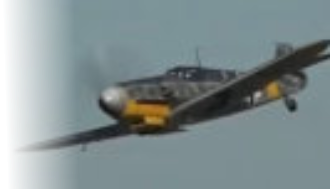
Bruce Edwin Graham, (b. 1940) is the son of Stanley George Graham (1913-
1995) and Winifred Margaret (Hopkins) Graham (1899–1985).
The Post-War Years
With the war’s end and the return of my father, demobilized from the
RAF, the family moved to a newly built bungalow at Bearcross. I attended
Kinson Primary School, one of the oldest schools in Bournemouth. He then
attended Ringwood Grammar School and in 1952 transferred to Portchester
Secondary School for Boys. The ‘partner school’ just down the road was
Avonmore Secondary School for Girls and we all travelled together on a No. 3
bus, attended sports and swimming meets etc. together. There I met up with
a dedicated team of energetic teachers. Mr. J. K. Williams was the making of
me. His was a delivery of maths, and science that I absorbed like blotting
paper.
My father, employed by Westminster Bank Ltd., was given a transfer to
New Milton. I suddenly just about totally lost all my childhood friends, male
and female. No more Friday evening Bournemouth Square Dancing Club; no
more Saturday morning Westover Ice Rink skating sessions with the girls and
boys whom I knew so well; no more watching basketball, and roaring for our
Girls Team to win!
Another transfer for my father, a Chief Clerk at the bank, a year later
was to Haslemere, Surrey.
In late 1955, I enrolled in the Thames Nautical Training College, HMS Worcester, at Greenhithe in Kent. This was where Mr.
Williams Maths teaching paid off during navigation lectures.
I served a four-year apprenticeship on the West African Trade with The Guinea Gulf Line of Liverpool (Owners John Holt and
Co., with huge ‘holdings’ in West Africa). Completing my ‘time’ I went to Warsash (Southampton University) to study for a 2nd
Mates’ Certificate of Competency. Discovering I was four days short of sea time, I went to a Coastal Company, F. T. Everard and
Sons Co. Ltd., of Greenhithe. There I had an enjoyable year on the coast, as 2nd, then 1st Mate, to Captain Brown, learning about
tankers. During that time, I met my future wife, Rosemary May Enticknap.
Gaining my 2nd Mates Certificate at Warsash enabled me to get the 3rd Mate’s position with the Blue Star Line, on their only
tanker, MV Pacific Star. Blue Star also took me on an around the world circumnavigation, on their SS Wellington Star.
I gained my 1st Mates’ Foreign Going Certificate in 1963 and signed a two-year contract with BP Tankers.
And, that year, I married Rosemary.
In 1964, I left seafaring and became a carpenter and joiner. The final year at sea, I studied the theory and trade drawing for
those trades. In 1965, having gained a City and Guilds First Class Pass in the carpenter and joiner examinations, I emigrated to
New Zealand, where until early 1969, I practised both trades.
I was invited to enter an application for the post as Child Welfare Officer, with the Child Welfare Division of the New Zealand
Dept. of Education, was successful, and got promotion to Senior Social Worker in 1975.
I left that profession and returned briefly to the United Kingdom in 1981, where I stayed in Bruton, with my four children
and my elderly mother until early 1983, when Rosemary also returned to Britain, and we all returned to New Zealand in June of
that year.
Once again, I did carpentry until in May of 1984. I was successful in getting a part-time position as a tutor in maritime
studies. This developed into a full-time post, as Tutor in Charge of Maritime Studies. I was able to fully develop the Maritime
School, with three full-time tutors, and four part-timers. The highest grade of ticket we taught was New Zealand Off-Shore Master.
Other Courses included: Qualified Fishing Deckhand; Inshore Launch Master; Proficiency in Survival Craft; General Radio
Operator; Restricted Radar Observer and 2nd Class Diesel Trawler Engineer.
In 2002, I was able to take an early retirement at age 62.
The Family Service during World War I and World War II
My father, Stanley George Graham (1913-1993), known as ‘George’ served with the rank of Sergeant
with the Royal Air Force in India during WWII. At the time of his death he was living at 42 Archery
Square, Walmer, Deal, Kent.
My uncle, father’s brother, Donald Graham (1917-1941) whose nickname was “Jock” was serving as
a Supply Assistant on the British Battle Cruiser, HMS Hood when she was sunk on May 24, 1941, by
the German battleship Bismark, with the loss of all but three of her 1418 Officers and crew.
His name is listed on the Portsmouth Naval Memorial, Hampshire, England
(Panel 57, Column 2)
My mother’s brother John Arthur Hopkins (1906–2002) served as a Corporal, with the Royal
Engineers in Sicily, Crete, and North Africa. He was invalided out of the army with recurring malaria
and once back in England, joined the Home Guard.
My grandfather, Edgar Graham (1880–1952) served with the Royal Navy from 1903 until
1925 as an Engine Room Artificer. He was twice Mentioned in Despatches: London
Gazette April 11, 1919 “For Services while serving with the Channel Fleet” and in the
London Gazette November 11, 1919 “For Services while in Russia”.
During WWII, Edgar served on HMS Cutty Sark as 2nd Engineer and Chief Engineer
between October, 1939, and February, 1941. In 1940, HMS Cutty Sark was converted to
a Submarine Tender, and was attached to the 3rd Submarine Flotilla. HMS Cutty Sark
was ordered to Dunkirk, with all the other ships, to help evacuate allied troops from the
beaches; however, was diverted, to St. Malo, to destroy the masts of the Radio Station
there, and this operation was successful. However, while alongside, she was dive
bombed and one side of the ship was severely damaged, resulting in a flooded engine
room. The engines were out of action, and HMS Cutty Sark had to be towed back to
England for repairs by the destroyer, HMS Viscount.
Edgar remained as Chief Engineer until he was Discharged Ashore on February 18, 1941.
Great Uncle George William Graham (1887-1917) brother of Grandfather, Edgar Graham, enlisted
with the Middlesex Regiment on September 8, 1914. He served with the Expeditionary Force in
France and Flanders. He was gassed and invalided home to recover in April 1916.
He received a commission and was gazetted as 2nd Lieutenant with the 6th Middlesex Regiment in
July 1917. He joined his Battalion in France in August. He was attached to the Lancashire Fusiliers
and was killed in action east of Ypres on September 20, 1917. His Commanding Officer, Colonel G.
Brighton, wrote: “He faced death as a true soldier, and was a very gallant and just officer, most
courteous and ready to assist in every way. He will be missed much by one and all, and his
battalion greatly deplore his death, for he was very popular with all ranks.”
He was mentioned in Despatches and commended for good work on the Somme, and awarded the
Military Medal for gallant and distinguished service in the field.
His name is listed on the Tyne Cot Memorial, Zonnebeke, West Flanders, Belgium.
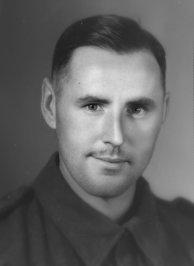
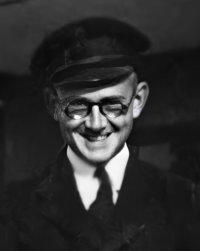
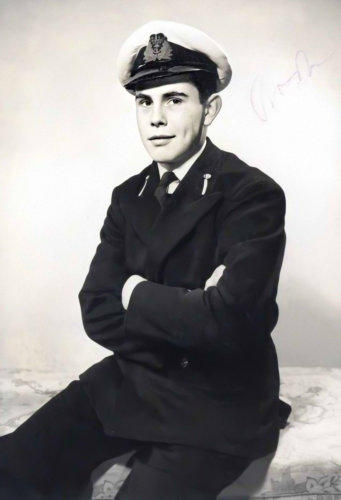
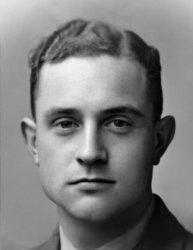
Edgar Graham
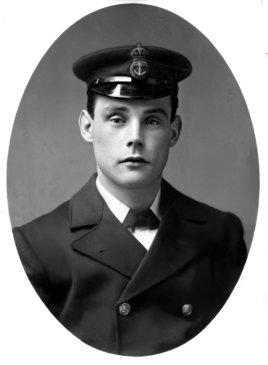
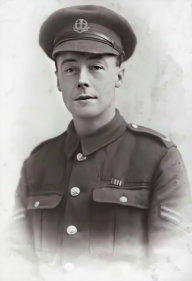


- World War I - Menu
- WWI Stories and Articles
- Photos - Yarmouth Soldiers
- Selection of World War I Songs
- WWI Casualties of Yarmouth, NS
- Those Who Served - Yarmouth, NS
- WWI Casualties Digby Co. NS
- WWI Casualties Shelburne Co. NS
- Merchant Mariners (1915) Yarmouth, NS
- Canadian Forestry Corps - Non Yarmouth Birth/Residence Enlistments
- US Draft Registry - Yarmouth NS Born


- World War II - Menu
- WWII Stories and Articles
- Telegraphist Air Gunners
- WWII Casualties of Nova Scotia
- US Casualties with NS Connection
- Far East/Pacific Casualties with NS Connection
- Merchant Navy Casualties Nova Scotia
- Nova Scotia WWII Casualties Holten Canadian War Cemetery
- D-Day Casualties - Nova Scotia
- CANLOAN Program Casualties - Nova Scotia
- Battle of the Bulge Casualties - Nova Scotia
- WWII Casualties Yarmouth NS
- Yarmouth Casualties - RCAF RAF Canadian Army WWII
- Yarmouth Co., Marrages WWII
- Casualties Non-Born/Residents with Connection to Yarmouth Co., Nova Scotia.
- WWII Casualties Digby Co., NS
- Non-Nova Scotian WWII Casualties Buried in Nova Scotia
- WWII RCAF Casualties Aged 16-18
- Brothers/Sisters Who Served - World War II













